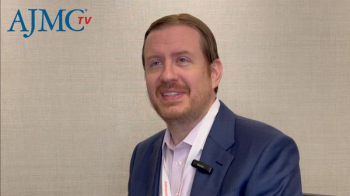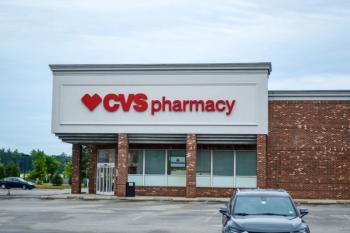
Influences on STI Risk Differ Among MSM With, Without HIV
Survey responses from the San Francisco Bay Area, from men who have sex with men (MSM), show differing behavioral and social influences on the risk of sexually transmitted infections (STIs).
While much is known regarding the influence that inhaled nitrates (poppers) and methamphetamine use have on sexually transmitted infection (STI) risk among MSM—both those living with HIV and those without
This survey gauged drug and alcohol use, condomless receptive and insertive anal sex, number of male sex partners, HIV status, and self-reported STI (syphilis, gonorrhea, chlamydia, herpes simplex virus [HSV], genital warts) diagnosis in the past 6 months among cisgender MSM. Bivariate logistic regression was employed to identify the correlates with STI diagnosis.
“Findings from such work may help inform the development of targeted intervention strategies for MSM who use alcohol who are living with and without HIV,” the authors wrote in
Gonorrhea was the most common STI overall, at 12.9%, followed by chlamydia at 9.3%, syphilis at 6.0%, genital warts at 3.6%, and HSV at 1.6%. Four (IQR, 2-10) was the median number of male sexual partners, and 17.8% were using pre-exposure prophylaxis (PrEP). Alcohol was the most common drug used in the previous 6 months, by a wide margin compared with popper use: 84.9% vs 33.6%.
When questioned regarding their history of binge drinking—defined for this study as consuming 5 or more drinks on 1 occasion—in the past year, 31.5% reported drinking weekly and 14.9%, daily or almost daily. Close to 24% reported drinking less than monthly. The Alcohol Use Disorders Identification Test (
For the subanalysis on risk factors associated with HIV status and recent STI diagnosis, the following results were seen and they differed according to seronegativity or seropositivity:
- MSM without HIV:
- Current PrEP use (adjusted odd ratio [aOR], 3.53; 95% CI, 1.42-8.75; P < .01)
- Popper use during sex in the past 6 months (aOR, 3.16; 95% CI, 1.34-7.47; P < .01)
- Any receptive condomless anal sex (aOR, 2.86; 95% CI, 1.15-7.08; P = .02)
- MSM living with HIV:
- White race/ethnicity (aOR, 7.36; 95% CI, 1.48-36.62; P = .01)
- Having more male sexual partners in the past 6 months (aOR, 1.03; 95% CI, 1.00-1.06; P = .02)
- Younger age (aOR, 0.90; 95% CI, 0.84-0.97; P < .01)
Based on these findings, the authors stress the importance of interventions to target both MSM living with and without HIV, increasing STI testing (especially for gonorrhea), implementing mobile screening models, and evaluating partner notification systems. They add that their findings on popper use echo previous studies showing a great need to integrate substance use treatment and sexual health education.
“This study provides important information on the prevalence and correlates of STIs among MSM living with and without HIV who use alcohol in the San Francisco Bay Area,” the authors wrote. “The high prevalence of STIs in this population underscores a persistent public health problem.”
Future studies should examine potential mediators of alcohol treatment and decreased STI acquisition among MSM, they concluded, adding, “We also recommend that sexual health programs develop streamlined processes to connect clients with alcohol dependence to efficacious treatment programs.”
Reference
Jain JP, Gyamerah AO, Baguso GN, Dawson-Rose C, Ikeda J, Santos G-M. Social and behavioral correlates of sexually transmitted infections among men who have sex with men who use alcohol in the San Francisco Bay Area. Am J Mens Health. 2021;15(3):15579883211026830. doi:10.1177/15579883211026830.
Newsletter
Stay ahead of policy, cost, and value—subscribe to AJMC for expert insights at the intersection of clinical care and health economics.

















































